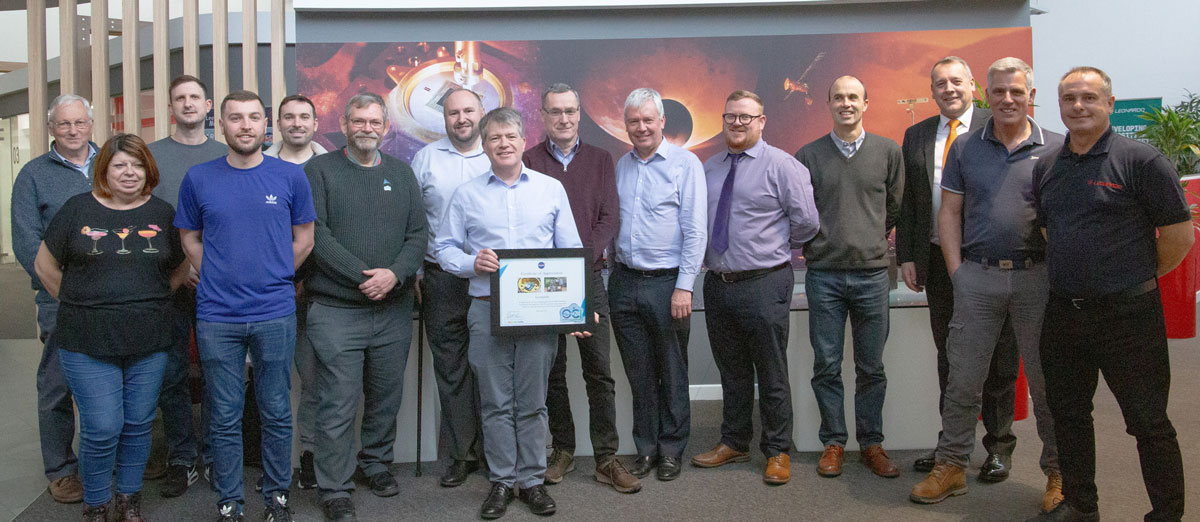That is because the sensor offers a vast new array of colours that will share much more detailed information than has been available in the past.
The Ocean Colour Instrument (OCI) on NASA’s PACE (Plankton, Aerosol, Cloud, ocean Ecosystem) programme is going to reveal a new spectrum of colours of the ocean, equivalent to seeing 256 colours instead of the previous 8, helping us to better understand the complex systems that drive ocean ecology.
The detectors that were delivered by Leonardo for the PACE mission form part of the Ocean Colour Instrument. The Ocean Colour Instrument (OCI), is a highly advanced optical spectrometer that will be used to measure properties of light over portions of the electromagnetic spectrum. It will enable the continuous measurement of light at finer wavelength resolutions and over a larger spectral range than previous NASA satellite sensors, extending key system ocean colour data records for climate studies.
Phytoplankton are microscopic organisms that contribute to the conversion of carbon dioxide from the atmosphere to the ocean. Carbon dioxide is critical for photosynthesis, and the carbon is incorporated into phytoplankton cellular material, just as carbon is stored in the wood and leaves of a tree. While humans breathe in oxygen and exhale carbon dioxide, phytoplankton behave in the opposite way, consuming carbon dioxide and releasing oxygen, making them a crucial part of the marine ecosystem.
The sensor can not only indicate the density of the phytoplankton population, it can help NASA identify the specific communities of phytoplankton, since they all have a different colour signature. This is important since some forms of phytoplankton can be highly toxic for marine life and for humans who consume shellfish and fish.
The colour of the ocean is determined by the interaction of sunlight with substances or particles present in seawater such as chlorophyll, a green photosynthetic pigment found in all phytoplankton species. By monitoring global phytoplankton distribution and abundance with unprecedented detail, the OCI will help us to better understand ocean ecology and the diverse populations of phytoplankton that exist within it.

Leonardo's team in Southampton who built the sensor for NASA's PACE mission
Initially Leonardo was contacted as part of a pre-development Phase and then as a source of Flight Spares. Following testing of the Leonardo devices by NASA, the special Leonardo sensors were promoted to flight hardware due to their enhanced performance.
Matthew Hicks, Space Programme Manager, Leonardo UK said: “It’s been incredibly rewarding to work in collaboration with the PACE team at NASA. We feel a sense of urgency in delivering this capability for their important work, since recent satellite observations have suggested a small decrease in global phytoplankton productivity. Low-nutrient ‘marine deserts’ appear to be expanding due to rising ocean surface temperatures. It is a real source of pride that the sensors fitted to the NASA satellite could generate years of data to their scientists who could identify pathways to help us protect our oceans in the future.”
Jeremy Werdell, Project Scientist for the PACE mission as well as a Biological Oceanographer in the Ocean Ecology Laboratory at NASA’s Goddard Space Flight Centre in Greenbelt, Maryland said: “All citizens of the Earth should realise everything is connected: land, ocean, and atmosphere. PACE is NASA’s next great investment in the combined studies of all these aspects of the Earth’s system. With its capabilities, there’s so much scientific growth that will be accomplished, which makes PACE incredibly important to how we understand what we’re doing to our home planet.”
Leonardo has a long heritage of delivering infrared detector technology into Space Flight missions and has been working with NASA missions since 1972 for NIMBUS 5.
In recent years, Leonardo has supplied detectors for the NASA Osiris-Rex asteroid return programme from the Bennu asteroid and the NASA LUCY mission to explore the Jupiter Trojan asteroids.

